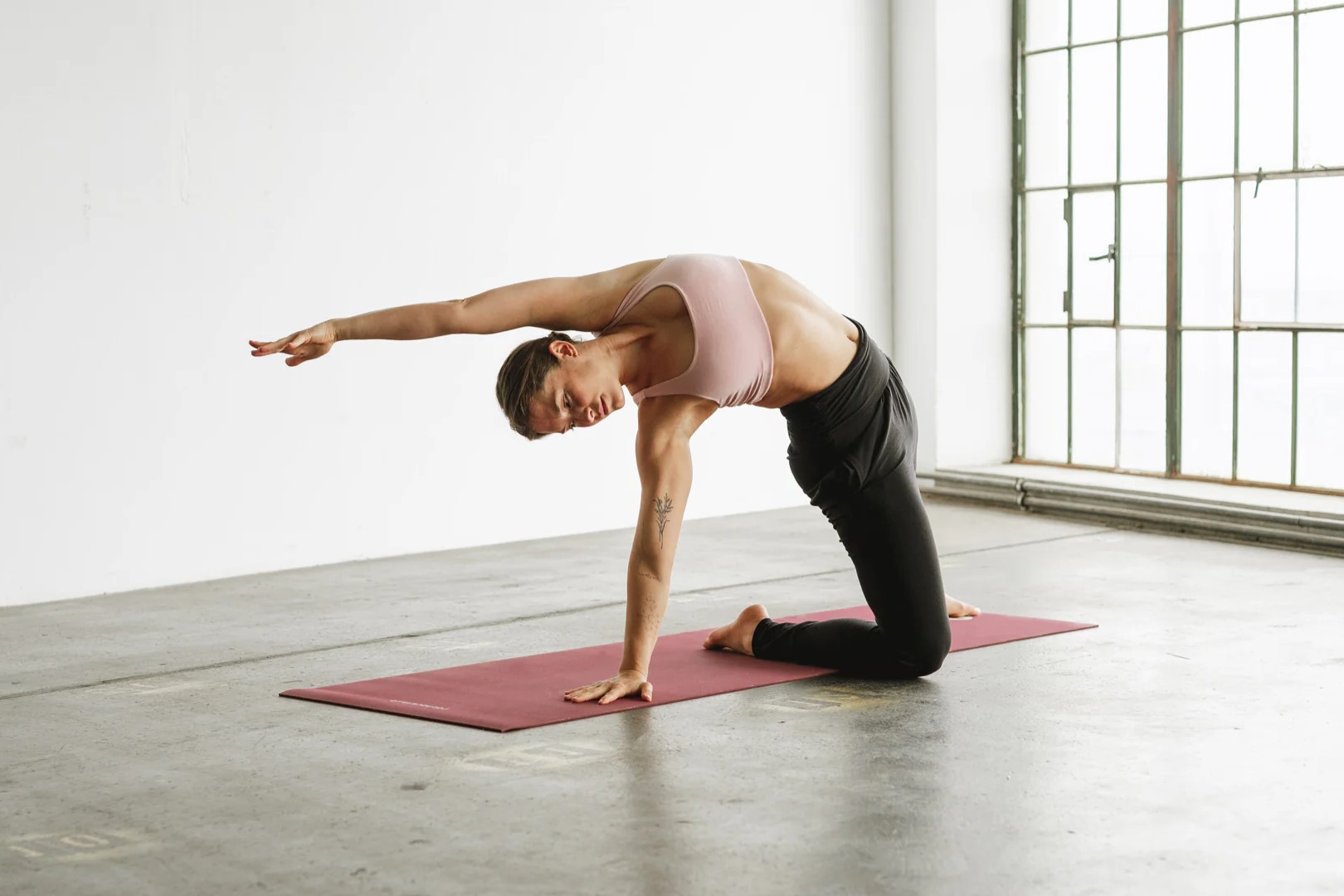
Vinyasa Yoga is a dynamic and flowing style of yoga that links breath with movement. Originating from the Ashtanga tradition, it has gained immense popularity due to its fluid sequences and adaptability. But what makes Vinyasa Yoga so special? It's the seamless transition between poses that creates a dance-like rhythm, offering both physical and mental benefits. Whether you're a seasoned yogi or a beginner, Vinyasa Yoga can be tailored to suit your needs. From building strength and flexibility to reducing stress and improving focus, this practice has something for everyone. Ready to dive into the world of Vinyasa Yoga? Let's explore 50 fascinating facts that will deepen your understanding and appreciation of this transformative practice.
Key Takeaways:
- Vinyasa Yoga, also known as "flow" yoga, offers a dynamic practice that links breath with movement, improving cardiovascular health, flexibility, and mental well-being.
- Practicing Vinyasa Yoga regularly enhances muscle tone, reduces stress, and promotes mindfulness, offering a holistic approach to physical and mental well-being.
What is Vinyasa Yoga?
Vinyasa Yoga, often called "flow" yoga, is a popular style that links breath with movement. This dynamic practice offers numerous benefits for both body and mind.
- Vinyasa means "to place in a special way" in Sanskrit.
- It emphasizes the connection between breath and movement.
- Each movement is synchronized with an inhale or exhale.
- Vinyasa Yoga is known for its fluid, dance-like sequences.
- It originated from Ashtanga Yoga, a more rigid form.
- Classes can vary greatly depending on the instructor.
- It helps improve cardiovascular health.
- Vinyasa can be practiced at different paces, from slow to fast.
- It often includes a variety of poses, making each class unique.
- This style is excellent for building strength and flexibility.
Health Benefits of Vinyasa Yoga
Practicing Vinyasa Yoga regularly can lead to numerous health benefits. From physical to mental well-being, this yoga style has much to offer.
- Enhances muscle tone and strength.
- Increases flexibility over time.
- Boosts metabolism and aids in weight loss.
- Improves balance and coordination.
- Reduces stress and anxiety levels.
- Promotes better sleep patterns.
- Enhances lung capacity and breathing efficiency.
- Supports cardiovascular health.
- Helps in detoxifying the body through sweat.
- Improves mental focus and concentration.
Mental and Emotional Benefits
Beyond physical health, Vinyasa Yoga offers significant mental and emotional advantages. It can be a powerful tool for managing stress and improving overall mental well-being.
- Encourages mindfulness and present-moment awareness.
- Reduces symptoms of depression.
- Enhances emotional resilience.
- Promotes a sense of inner peace and calm.
- Helps in managing anger and frustration.
- Improves self-esteem and body image.
- Encourages a positive outlook on life.
- Provides a sense of community and belonging.
- Helps in overcoming fear and anxiety.
- Encourages self-reflection and personal growth.
Vinyasa Yoga Poses
Vinyasa Yoga includes a wide range of poses, each with its own benefits. These poses can be modified to suit different levels of experience and flexibility.
- Downward-Facing Dog: Strengthens arms and legs, stretches the spine.
- Chaturanga: Builds core strength and tones the arms.
- Warrior I: Enhances balance and strengthens the legs.
- Warrior II: Opens the hips and chest, builds stamina.
- Triangle Pose: Stretches the legs and torso, improves digestion.
- Tree Pose: Improves balance and strengthens the legs.
- Cobra Pose: Strengthens the spine, opens the chest.
- Child's Pose: Provides a gentle stretch, promotes relaxation.
- Plank Pose: Builds core strength and stability.
- Seated Forward Bend: Stretches the hamstrings and lower back.
Tips for Practicing Vinyasa Yoga
To get the most out of your Vinyasa Yoga practice, consider these helpful tips. They can enhance your experience and ensure you practice safely.
- Always warm up before starting your practice.
- Focus on your breath and let it guide your movements.
- Listen to your body and avoid pushing too hard.
- Use props like blocks and straps if needed.
- Stay hydrated, especially if practicing in a heated room.
- Wear comfortable, breathable clothing.
- Practice regularly to see continuous improvement.
- Find a qualified instructor to guide you.
- Incorporate meditation and relaxation techniques.
- Enjoy the journey and celebrate your progress.
The Power of Vinyasa Yoga
Vinyasa Yoga offers a dynamic blend of movement and breath that can transform both body and mind. From improving flexibility to reducing stress, the benefits are vast. This practice isn't just about physical poses; it's a holistic approach to well-being. Whether you're a seasoned yogi or a beginner, incorporating Vinyasa into your routine can lead to significant health improvements. Remember, consistency is key. The more you practice, the more you'll notice changes in your strength, balance, and mental clarity. So, roll out your mat, find your flow, and let Vinyasa Yoga guide you to a healthier, more balanced life.
Frequently Asked Questions
Was this page helpful?
Our commitment to delivering trustworthy and engaging content is at the heart of what we do. Each fact on our site is contributed by real users like you, bringing a wealth of diverse insights and information. To ensure the highest standards of accuracy and reliability, our dedicated editors meticulously review each submission. This process guarantees that the facts we share are not only fascinating but also credible. Trust in our commitment to quality and authenticity as you explore and learn with us.


